Tuesday morning I finished writing a postcard to Ursula, back in Tallahassee wondering what I was doing. I knew she'd have enjoyed this trip too, and sent her a hint of what she was missing. This mail box was on the corner in front of the hotel.
Everything I needed for the upcoming 3-day trip to Wales was either in my backpack or in one of the many pockets of my vest, making it a bit easier to travel. |
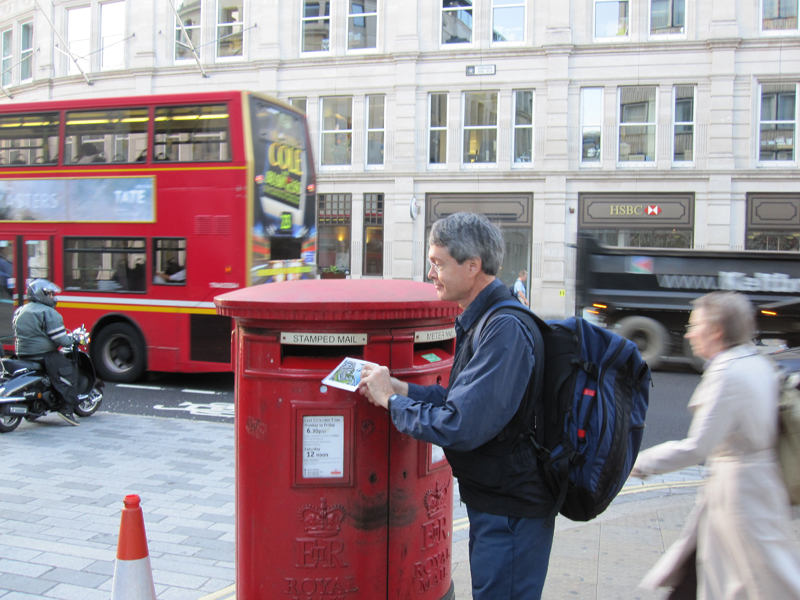 |
| |
The number of passengers in each of the train's dozen or so passenger cars ebbed and flowed at various stops, but it was always quiet.
The pink "ear" on each seat is handy for grabbing while walking down the aisle, if the train should lurch a bit.
The car behind us included a small snack shop, where we each got coffee and a"breakfast bap," like an Egg McMuffin on a soft roll. |
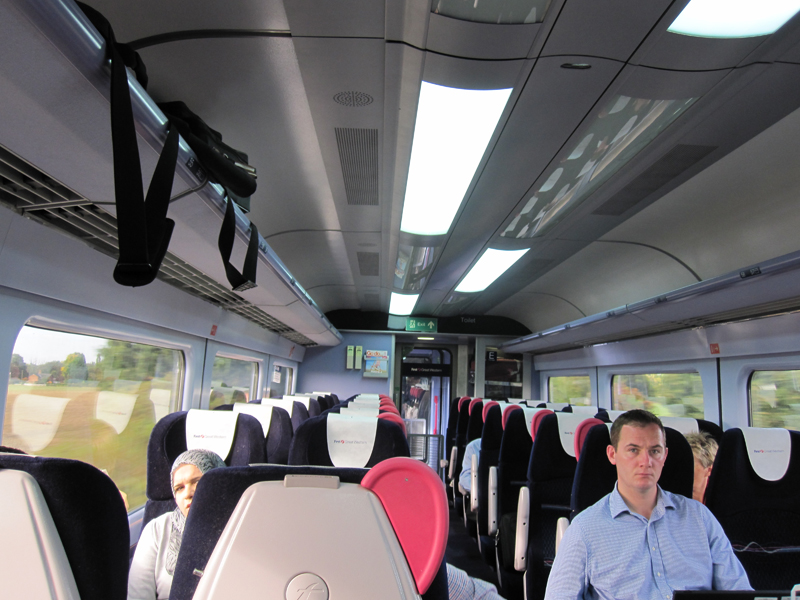 |
| |
| At 10:50 we crossed the border into Wales--too quickly to get a shot of the Croeso i Gymru / Welcome to Wales sign along the tracks, but here's my first shot of the Welsh countryside. Looks a lot like the English countryside. |
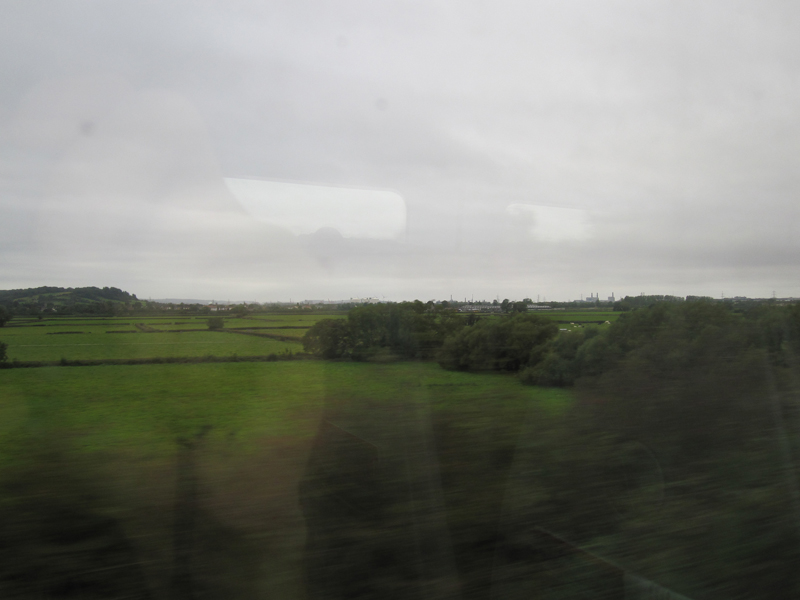 |
| |
| Getting into Cardiff, the capital of Wales and its largest city. It's also an active port. |
 |
| |
| Caerdydd Canolog (Cardiff Central) is the largest train station in Cardiff, and the one on the route between London and Aberdawe (Swansea) farther west. |
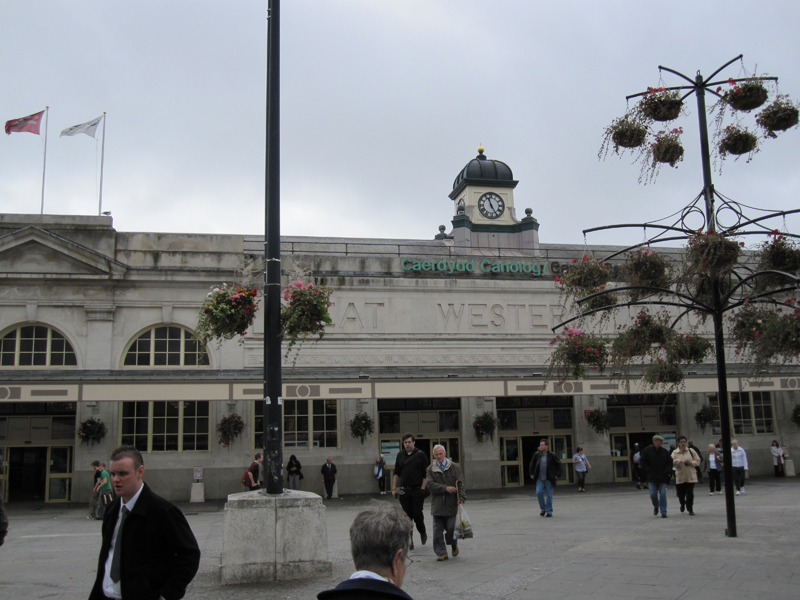 |
| |
| Walking from the train station to the car rental location a few blocks away, we passed these vegetable sculptures. The entire area has been spruced up in recent years. |
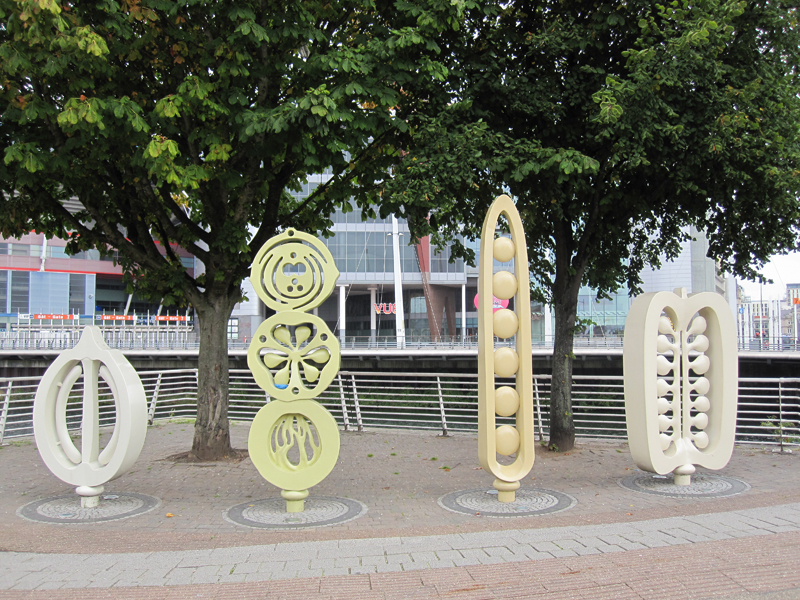 |
| |
| After picking up the car we drove (carefully, on the left side of the road) to St. Fagans, a few miles outside Cardiff. This town is the site of the St Fagans National History Museum, and previously was called the Museum of Welsh Life. It includes a castle and gardens, but we came to see the recreations of farms and homes as they were in various parts of Wales at various times in the past. Most of the buildings are actual historic structures that were moved here from their original locations. |
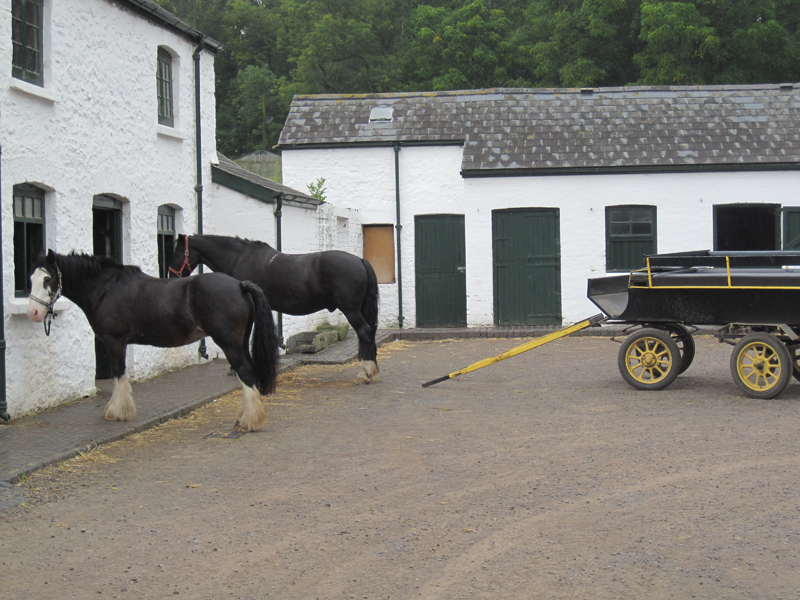 |
| |
The water wheel outside the Melin Bompren Corn Mill, built in Cross Inn, Ceredigion, in 1852. Melin means mill, and corn means, in this case, wheat (our corn is maize there).
Most mills didn't have fireplaces because of the fire (and explosion) hazard from the grain dust in the air, but this one did. It must have kept the mill workers comfy--if a little edgy--on cold Welsh nights. |
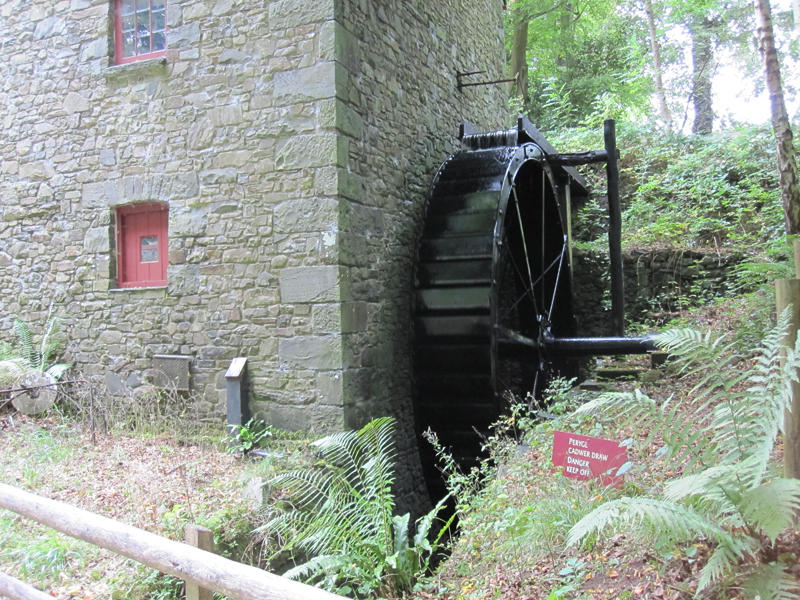 |
| |
| Jennifer is standing under the eave of the Hendre'r-Ywydd Uchaf farmhouse from Llangynhafal, Denbighshire, to show how thick the thatched roof is. It easily keeps out the rain, and adds a lot of insulation. |
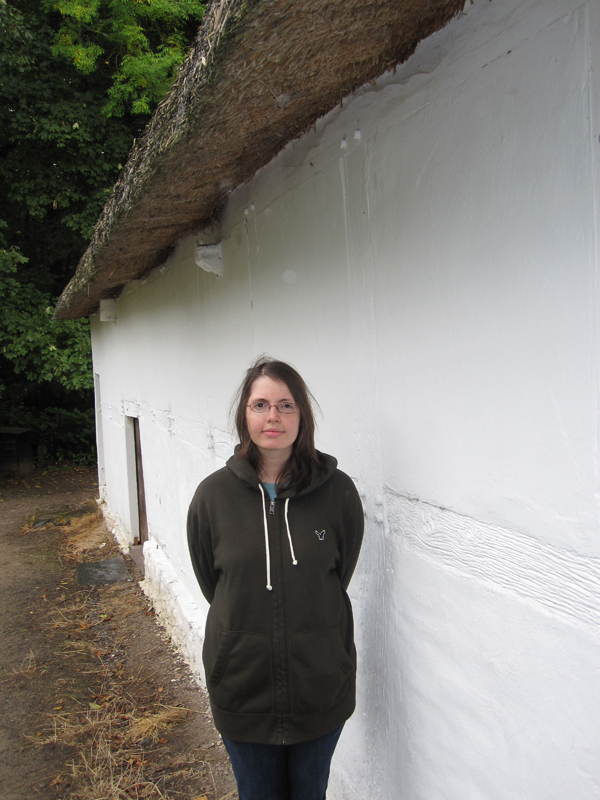 |
| |
| The underside of the thatched roof consists of woven sticks to support the thatch. This farmhouse was originally built in 1508. |
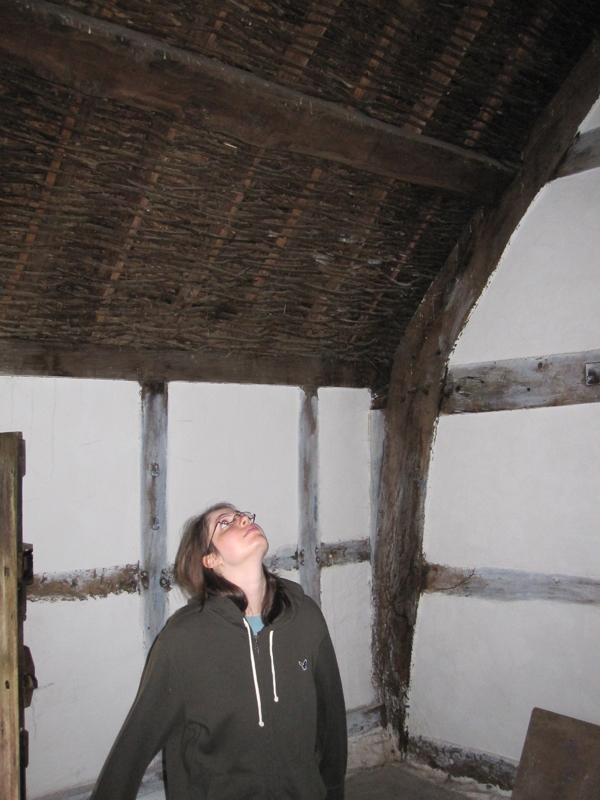 |
| |
| This is a tollhouse from Penparcau, Aberystwyth, Ceredigion. With it's associated gates it controlled the main road from Aberystwyth starting in 1772. Major roads in Wales at the time were tolled, as they were built by wealthy landowners not by any government. |
 |
| |
| Sign on the side of the tollhouse. Note that the sign is in English. The wealthy toll road owners tended to be English, not Welsh. The Welsh farmers were very unhappy with tolls they considered extortionate, and beginning in 1839 many tollgates were destroyed during the Rebecca Riots. Many of the uprisings were led by men disguised in women's clothing called Rebeccas after Genesis 24:60 - 'And they blessed Rebekah and said unto her, Thou art our sister, be thou the mother of thousands of millions, and let thy seed possess the gate of those which hate them'. Thomas Rees, a cousin of one of my anscestors, is said to have been the leader of the first of the Rebecca riots, although it was not safe at the time to claim credit. |
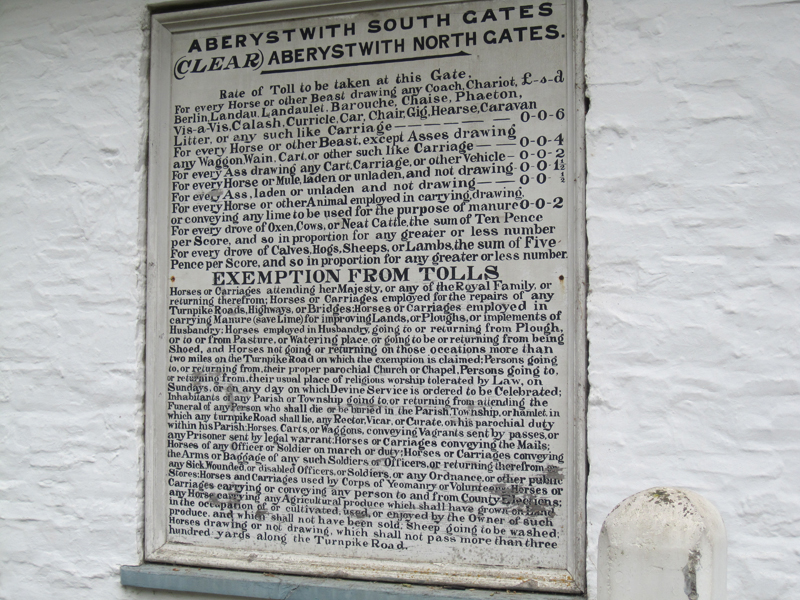 |
| |
| Llandeilo Tal-y-Bont Church, from near Pontarddulais, Carmarthenshire, as it would have appeared around 1520. It's smaller and simpler than a London cathedral, but inspired by the same kind of religious impulse and attracted the same kind of worshippers from the established Church (closely linked to the Church of England). |
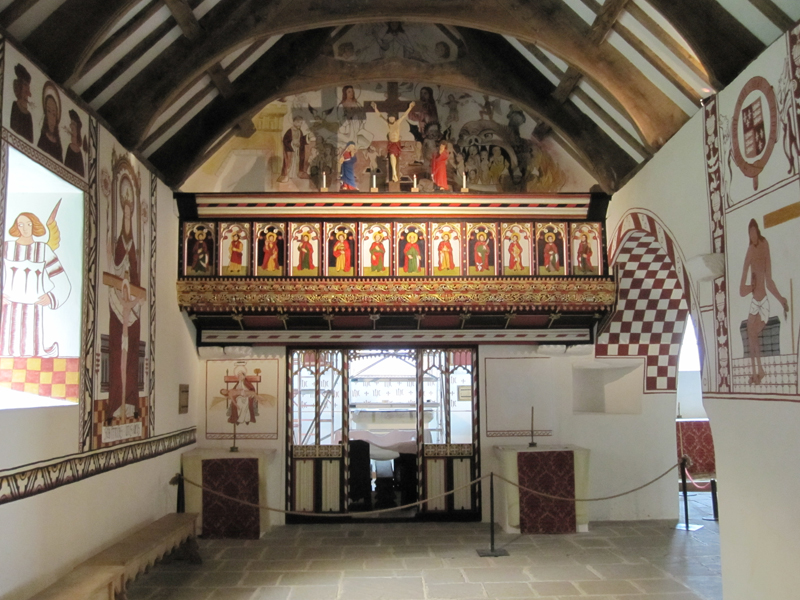 |
| |
| A guide talks to Jennifer about the elaborate wall paintings, which were uncovered fairly recently. |
 |
| |
A house in the Celtic Village, recreating a dwelling of Iron-Age ancestors of the current Welsh people. This one is based on an excavation from Moel-y-gerddi, Gwynedd.
Our first stop had been at the St Fagans gift shop, where I used funds supplied by Ursula's mother to buy a Welsh wool cap to keep the drizzling rain off of my glasses. |
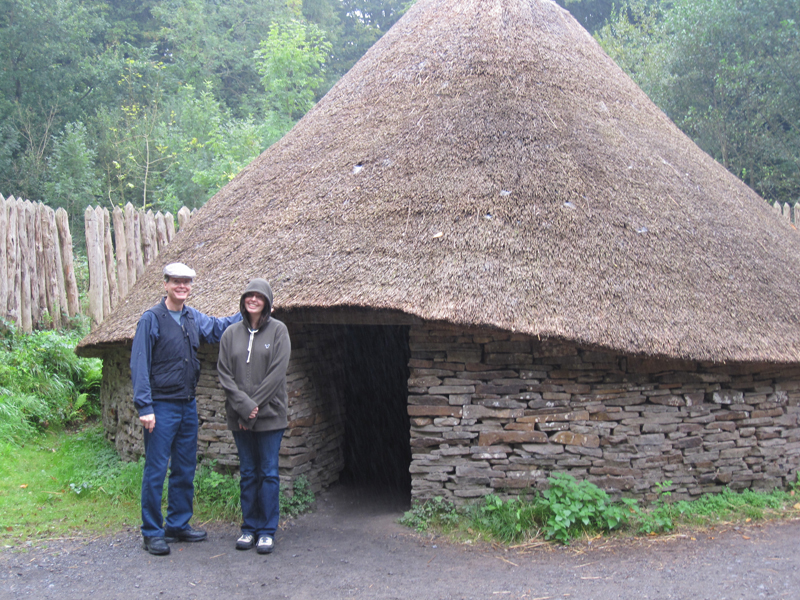 |
| |
| Inside the Celtic dwelling, an appropriately dressed "Celtic warrior" talked to a group of school children about his life and times. With a fire going and no windows, it was dark and smoky inside. |
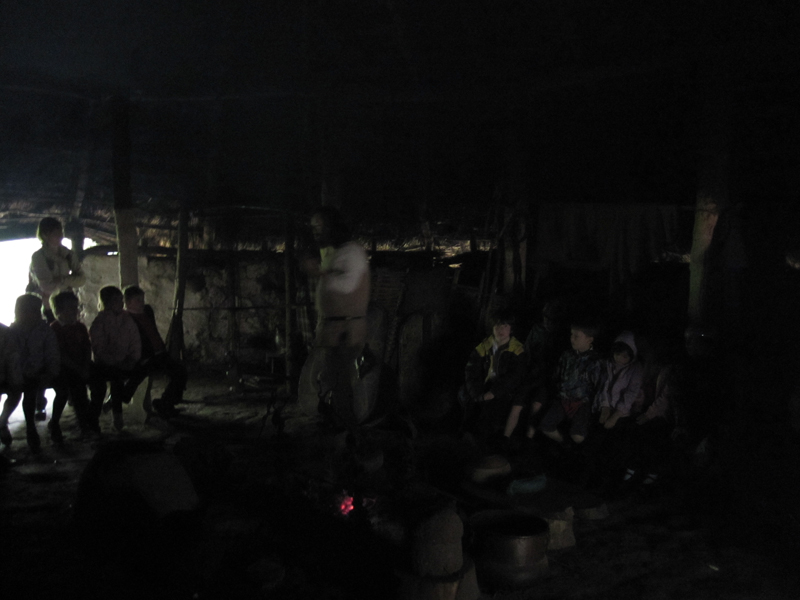 |
| |
| This row of identical-sized houses was built about 1800 to provide housing for workers in an iron-ore mine. The Rhyd-y-Car Iron Workers' Houses from Merthyr Tydfil are typical of quarters in Merthyr, the most important iron-manufacturing town in the world in the early 19th century. They are finished and furnished as they would have been in (from the left) 1805, 1855, 1895, 1925, 1955, and 1985. We spent most of our time in the 1855 house, as my great-great grandfather Caleb Rees was an iron worker in the Merthyr area at about that time. |
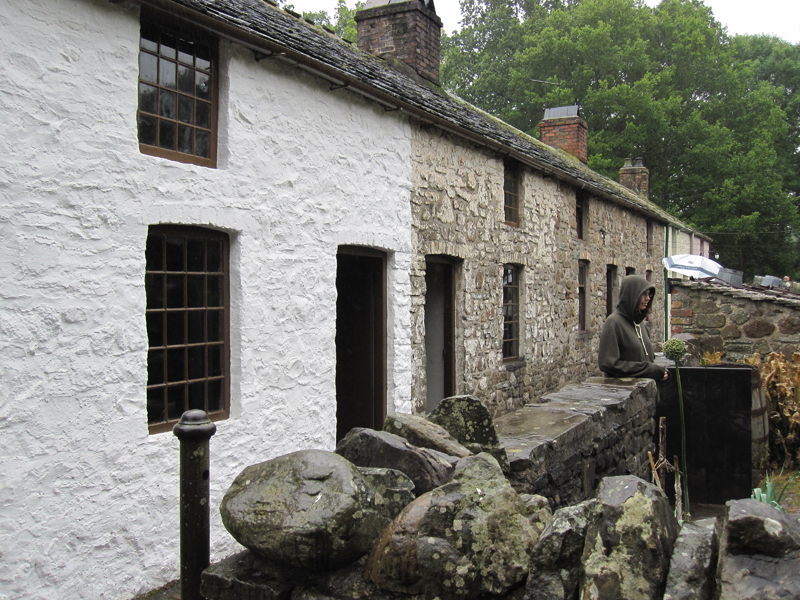 |
| |
| The entrance to the house. It wasn't much wider than this. The upper window shows there was a low upper floor. |
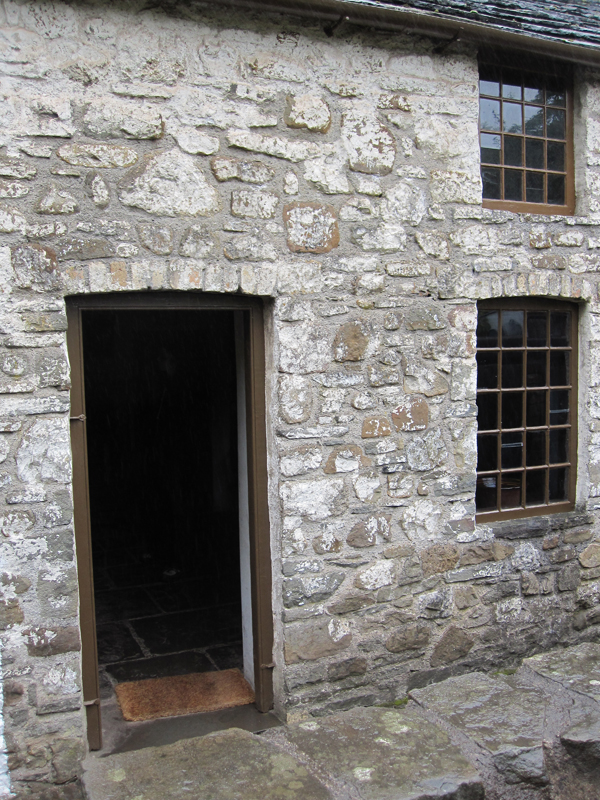 |
| |
| There are a fireplace and a writing desk on the right side of the main room, and a few books. |
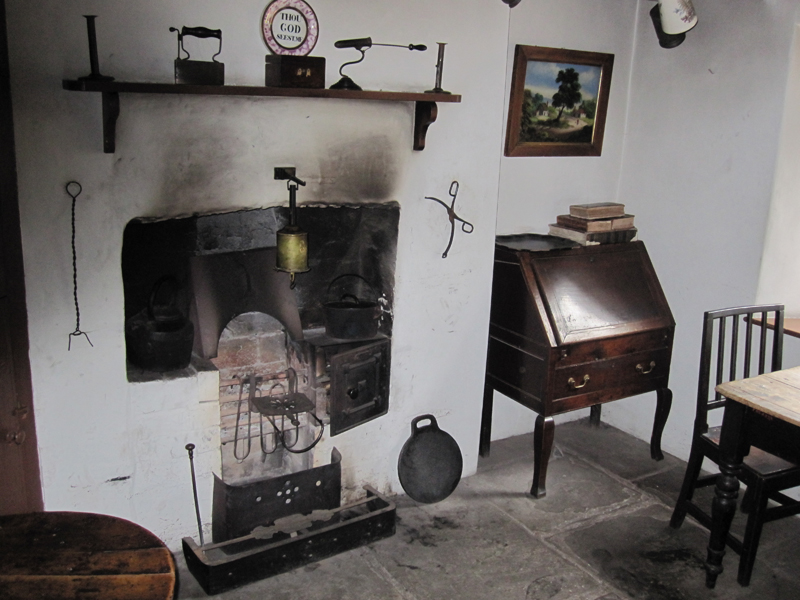 |
| |
| The back side of the main room includes a cabinet and some dishes. Jennifer is standing in front of the door to the small bedroom in back. |
 |
| |
| The bedroom has a window, a small bed, and a chair and, to the left, a small bedside table. No room for anything else. |
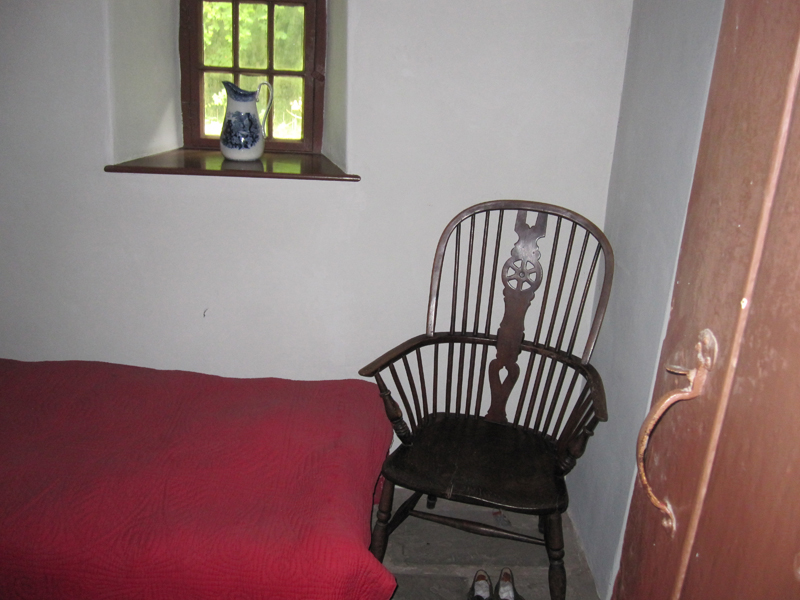 |
| |
| These are the stairs to the upstairs loft, usually occupied by the children. |
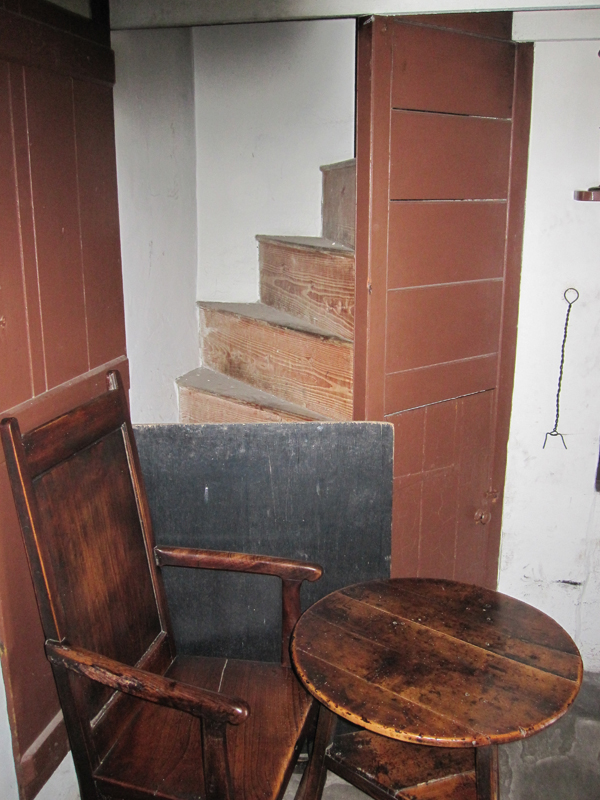 |
| |
| This plain building is the Pen-Rhiw Chapel from Dre-fach, Felindre, Carmarthenshire, near the birthplace of Caleb Rees' wife Rachel James. This Unitarian Chapel opened in 1777, and is typical of many "dissenting" or "non-conformist" chapels. Just as the early Protestants broke away from what they considered to be the excesses of Rome, the dissenters broke away from what they considered to be the excesses of the established Church. |
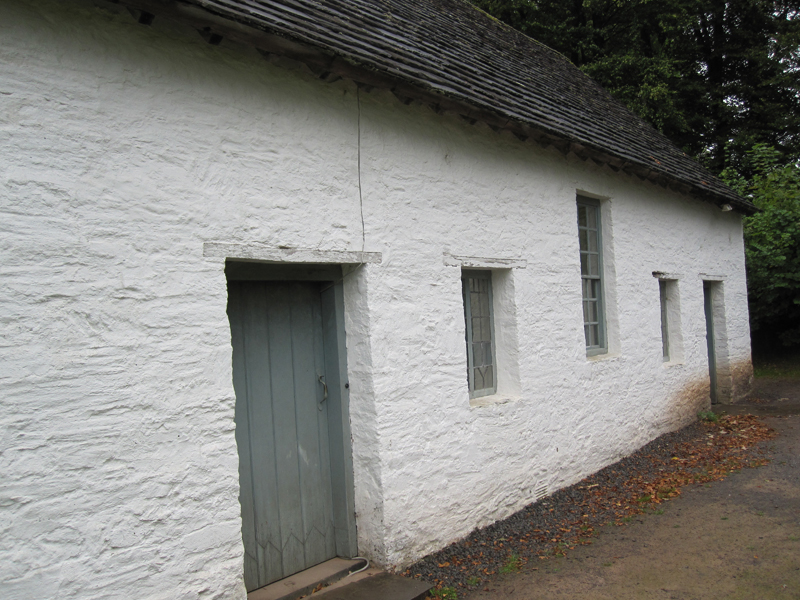 |
| |
| The interior of the Pen-Rhiw Chapel is similarly simple, and a bit cramped. The upstairs gallery added some seating capacity. |
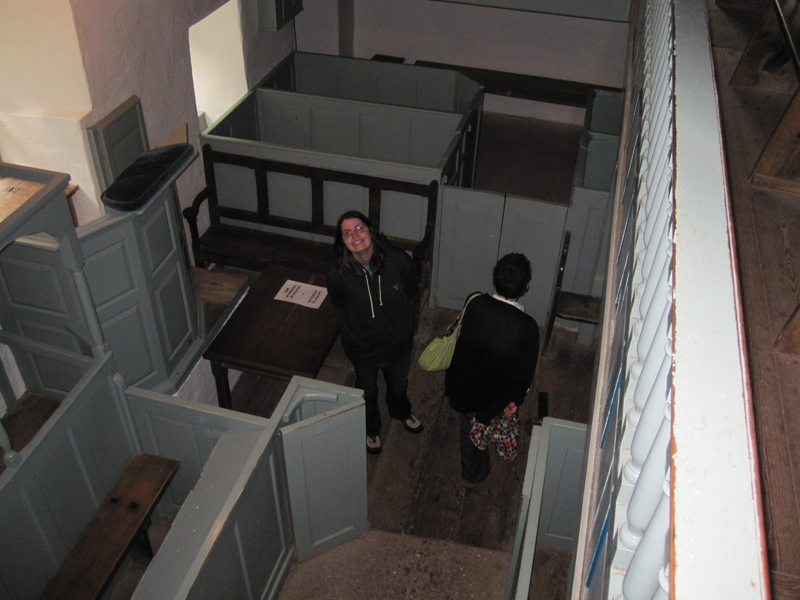 |
| |
As the rain got a little heavier, we got a late lunch at the cafe at the museum, and then headed for Llanedi, about 50 miles west and mostly on the M4 (like our Interstates).
Unfortunately, we got onto the M4 going in the wrong direction and ended up back in Cardiff and thoroughly lost. We eventually found our way back to St Fagans, and found a different way to make a wrong turn. After some curb-bumping and nearly wall-scraping trips down various very narrow roads, we turned around (at a double-blind driveway) and finally got onto the M4 in the right direction.
Most of the last couple of miles were on a one-lane road that happened to carry two-way traffic, but we finally made it to the B&B in Llanedy. From the window we could see that a bus stops right outside. Maybe next time we'll take the bus. |
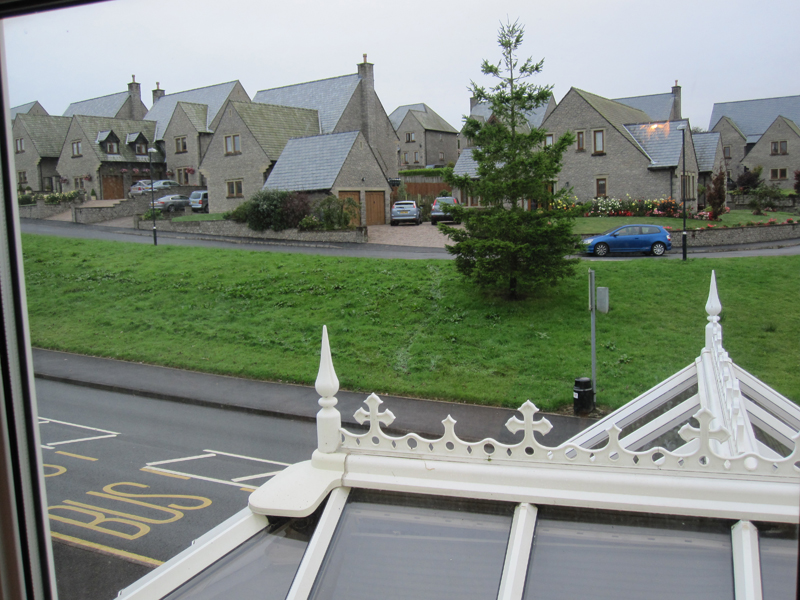 |
| |